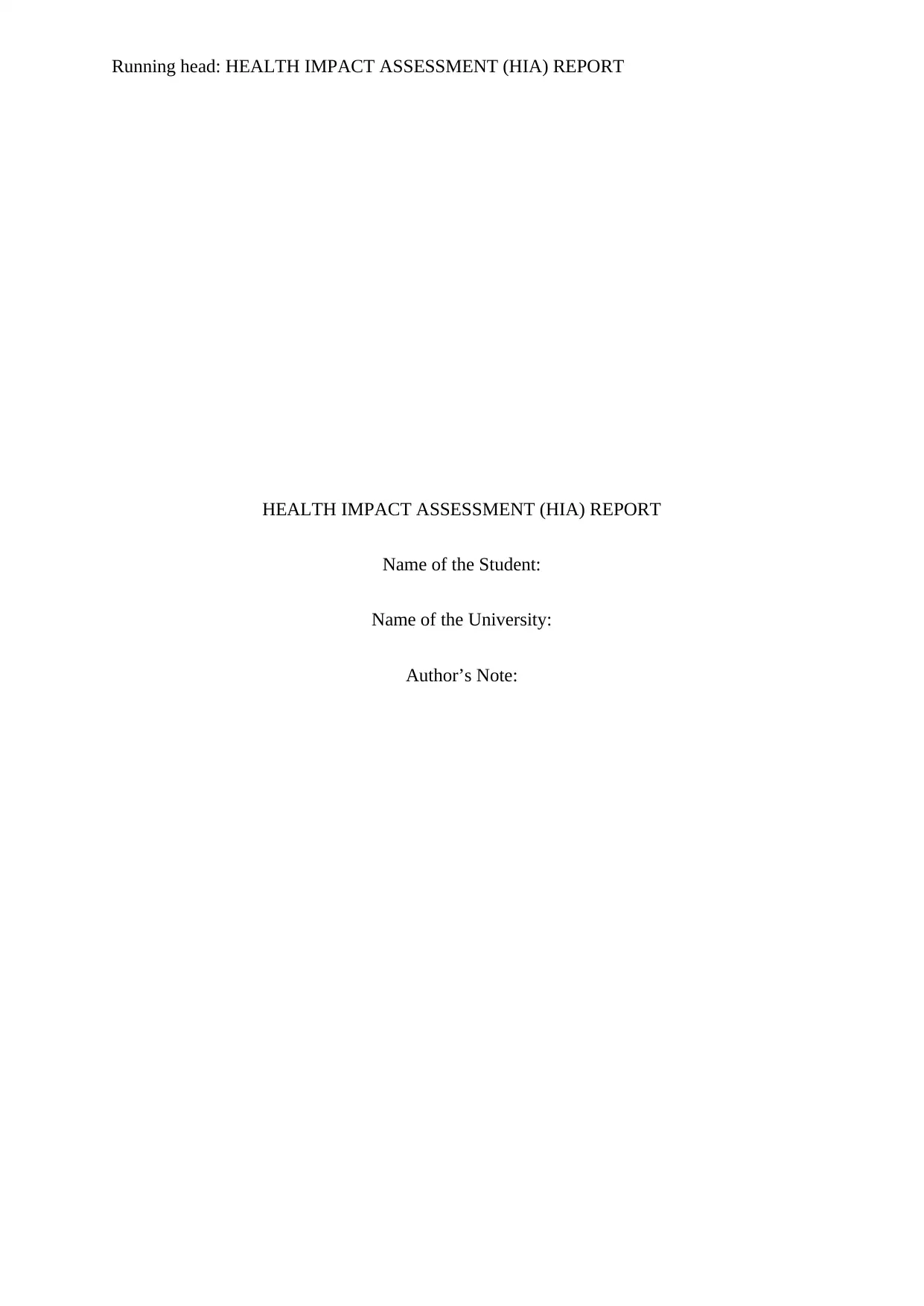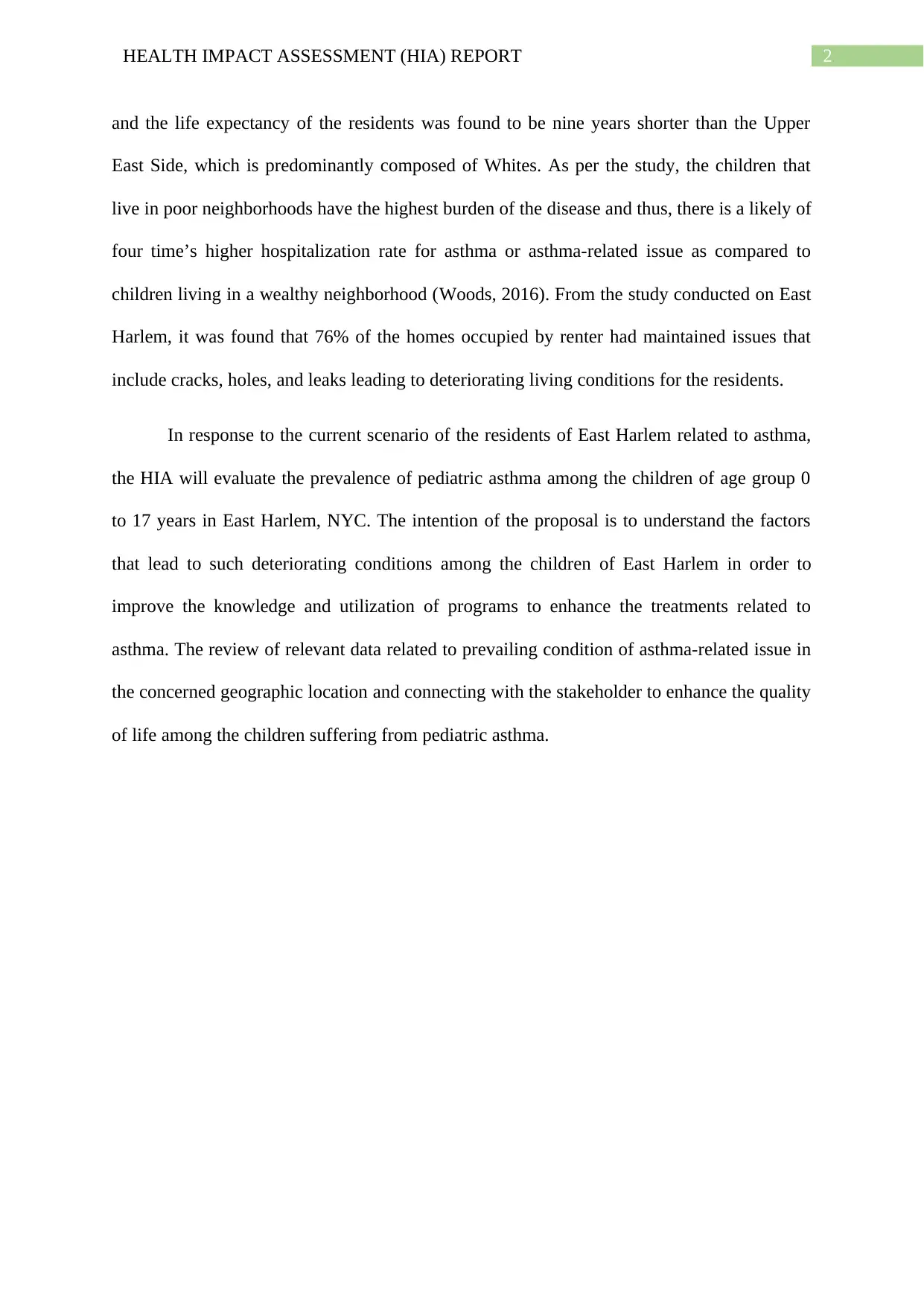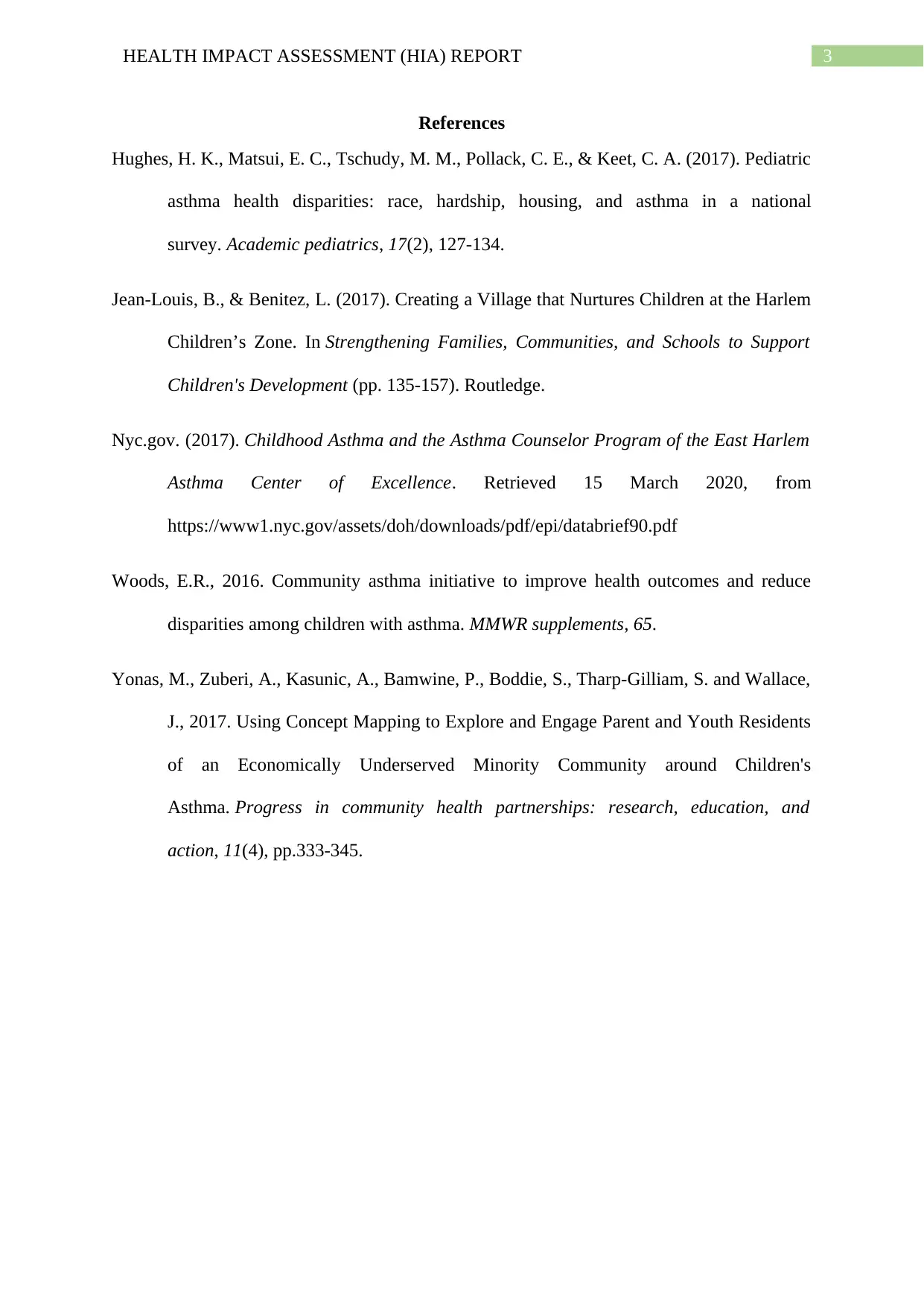University HIA Report: Pediatric Asthma in East Harlem, NYC
VerifiedAdded on 2022/08/22
|4
|894
|23
Report
AI Summary
This report provides a background analysis for a Health Impact Assessment (HIA) focusing on the prevalence of pediatric asthma among children aged 0-17 years in East Harlem, New York City. It highlights that pediatric asthma is a chronic respiratory disorder triggered by allergens and the data from 2015, revealing that 13% of children under 12 years in NYC were diagnosed with asthma. The report also highlights the racial disparities, with Black and Latino children having a higher likelihood of being diagnosed. The study also addresses the high rates of asthma-related hospitalizations and emergency visits in East Harlem compared to other parts of NYC and the socioeconomic factors contributing to the problem, such as poverty and poor housing conditions. The HIA aims to understand the factors leading to these conditions and improve asthma treatment programs. The report references key studies and data sources to support its findings.
1 out of 4











![[object Object]](/_next/static/media/star-bottom.7253800d.svg)